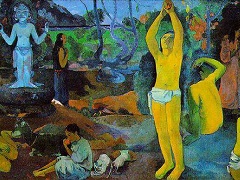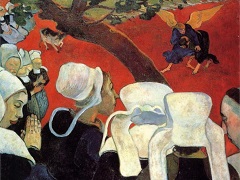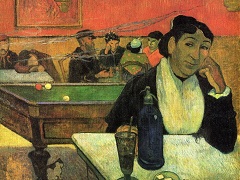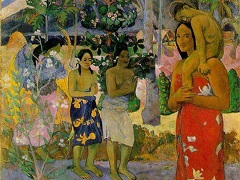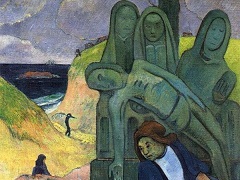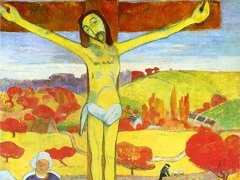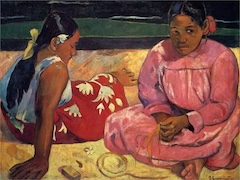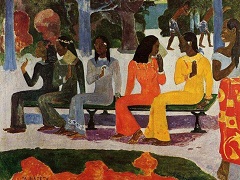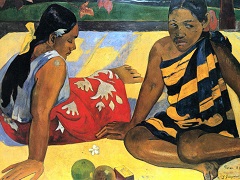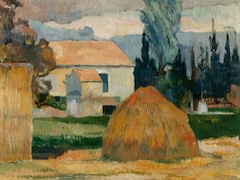By the Sea, 1892 by Paul Gauguin
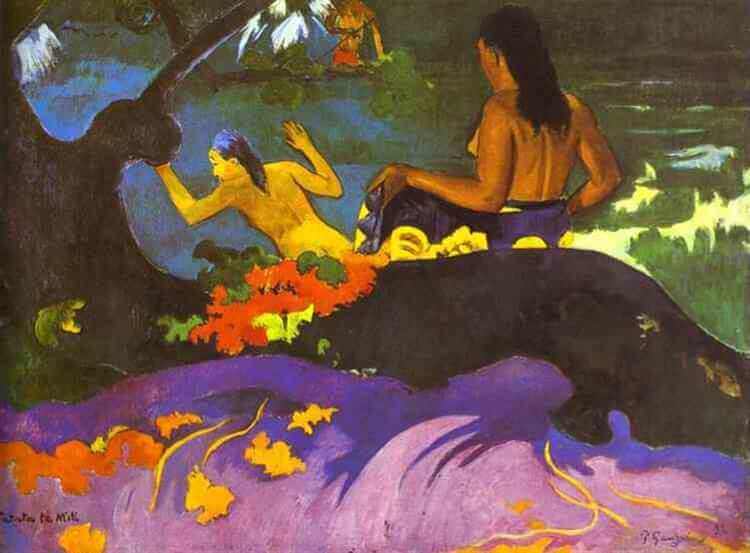
Europeans were always fascinated by the Tahitian women's practice of bathing naked and at great leisure. Writers of the Enlightenment saw it as striving for purity and physical vigor in a wearing climate. On the other hand, the brown-skinned naiads made a distinctly erotic impression on French sailors, as George Forster observed: "The simplicity of a dress which exposed to view a well proportioned bosom and delicate hands, might also contribute to fan their amorous fire; and the view of several of these nymphs swimming nimbly all round the sloop, such as nature had formed them, was perhaps more than sufficient entirely to subvert the little reason which a mariner might have left to govern his passions."
A good hundred years later, Pierre Loti remarked that his Tahitian partner Rarahu's main pastimes were daydreaming and bathing, "above all bathing." Nymphs taking a carefree dip in all their divine innocence are staples of the Golden Age, the fading image of which Gauguin was seeking on Tahiti. In Brittany he had already been arrested by the motif of well-made figures seen from the rear as they plunge naked into the waves. In this picture, everything makes a more tranquil, arabesque impression, including the shore in the foreground, which looks like a textile design and echoes the printed fabric of the girl on the right, just as the blossoms and the crests of waves echo each other. Initially Gauguin would sketch out such compositions as a network of wavy lines, which he then colored in. To heighten the luminous force of the colors he glazed them with a thin coating of wax.

